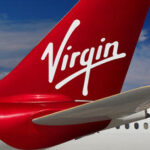Passenger experience is at the core of the airport business, but it can vary dramatically from country to country, reflecting diverse cultural norms and regional practices.
Here, writer and travel expert Daniel Ross explores how Asian airports compare to hubs elsewhere in the world…
I’ve visited over 160 airports on six continents of the world and there’s one place the airport experience strikes me as the most varied and different to that which travellers might expect in Europe and the US: Asia.
From mega airport cities like Singapore’s Changi International, to the ageing and rather lacklustre airport in Sri Lanka’s capital Colombo, there are some elements of the airport experience that are similar, and others that are seemingly worlds apart.
A major difference that’s likely to be the least obvious to passengers is that airports in Asia often have 24-hour operations meaning low-cost carriers can make the most of less popular times to fly, such as 3am, which is less costly for the airline.
In Europe, this is a very rare occurrence, especially at major international airports in cities like Barcelona, Frankfurt, and London. This is because European airports often have regulations which restrict the arrival and departure times of flights in an attempt to reduce noise pollution for those living in close proximity to the airport.
For example, London Heathrow — the biggest and busiest airport in the UK — does not schedule departures between the hours of 11pm and 6am, and arrivals are strictly forbidden to land before 4.30 in the morning.
That can mean if your red-eye flight makes up some time on route, pilots could be requested to slow down their approach or enter a holding pattern to delay landing until after the airport’s curfew lifts.
Restricted terminal access
In the UK and Europe you can pretty much turn up as much in advance of your departure time as you like.
Passengers departing from airports in Asia don’t always have that luxury. In Denpasar, Bali, for example, no matter how early you turn up for your flight, you won’t be granted access to the check-in inside the air conditioned part of the terminal more than two hours before your flight is scheduled to depart.
When arriving early, passengers aren’t even allowed into the main departures terminal and instead must wait outside the terminal. The whole area has no air conditioning so it can get pretty uncomfortable in the heat of the day.
Some airports, like New Delhi in India, are even more restrictive. Entrance to the terminal building is only permitted to those with a valid boarding pass for travel the same day.
In neighbouring Sri Lanka, its capital city’s airport has a similar policy of checking boarding passes to enter the terminal building. However, entrance into the terminal is permitted for a small fee.
Scanning of luggage before entering terminal
Passing through security is something we’re all very used to doing once we’ve dropped off our bags at check-in.
What many travellers won’t be accustomed to is having to pass through an additional security scanner on entering the airport — checked luggage included.
This additional security step is to mitigate the risk of any prohibited items making their way onto aircraft.
Airports where you can expect this extra layer of security include Malé in the Maldives.
A friendly farewell
No matter the weather, day or night, in East Asian countries such as Taiwan you can expect an extra special send off.
If you’re seated on the side of the plane facing the ground crew when the aircraft pushes back, you’ll often notice the crew who just turned the aircraft around standing in a line waving excitedly goodbye as you push back from the gate.
Who knows, maybe in a few years it’ll catch on and rampers at airports across the UK will start waving their planes goodbye.
The home of the Original Super Airport
Asia is also home to one of the world’s most extravagant airports: Singapore’s Changi International.
Despite opening over 40 years ago back in 1981, Changi Airport has managed to keep up with the times, mainly thanks to its show-stopping Jewel that was unveiled just before the pandemic in 2019.
With its cascading water fountain, the Jewel turned Changi into far more than just an airport, transforming it into a tourist attraction in its own right.
After taking selfies with the main attraction, visitors can spend their time browsing the many shops and entertainment that the Jewel has to offer.
For passengers transiting or departing the airport, there’s even a rooftop pool! Imagine that at Manchester Airport…
Whether you love airports or despise every second you spend in them, they are fascinating places where rules, restrictions, and facilities vary significantly depending on where in the world you are — especially airports across Asia.
Image Changi Airport, Singapore
Subscribe to the FINN weekly newsletter

